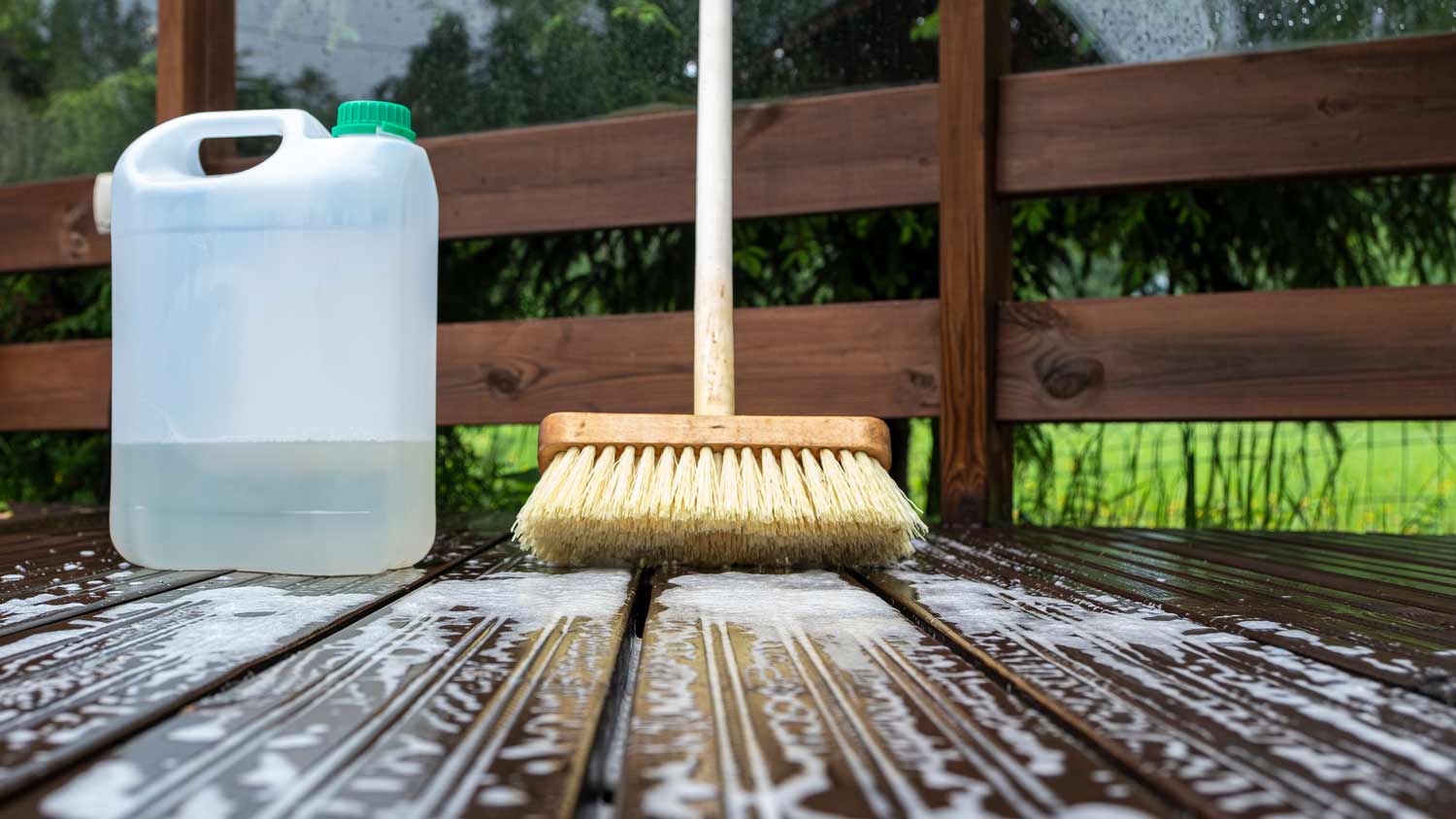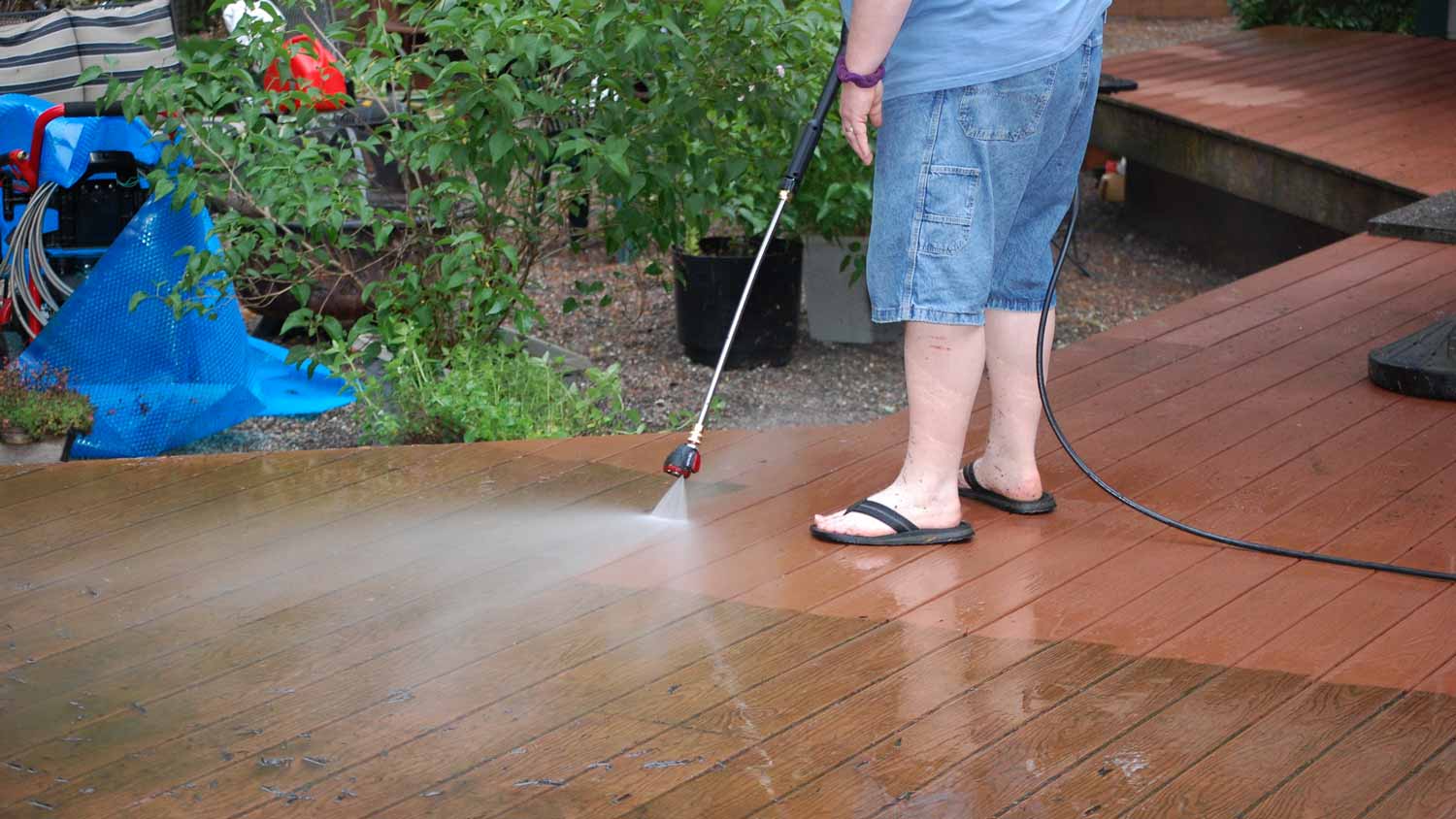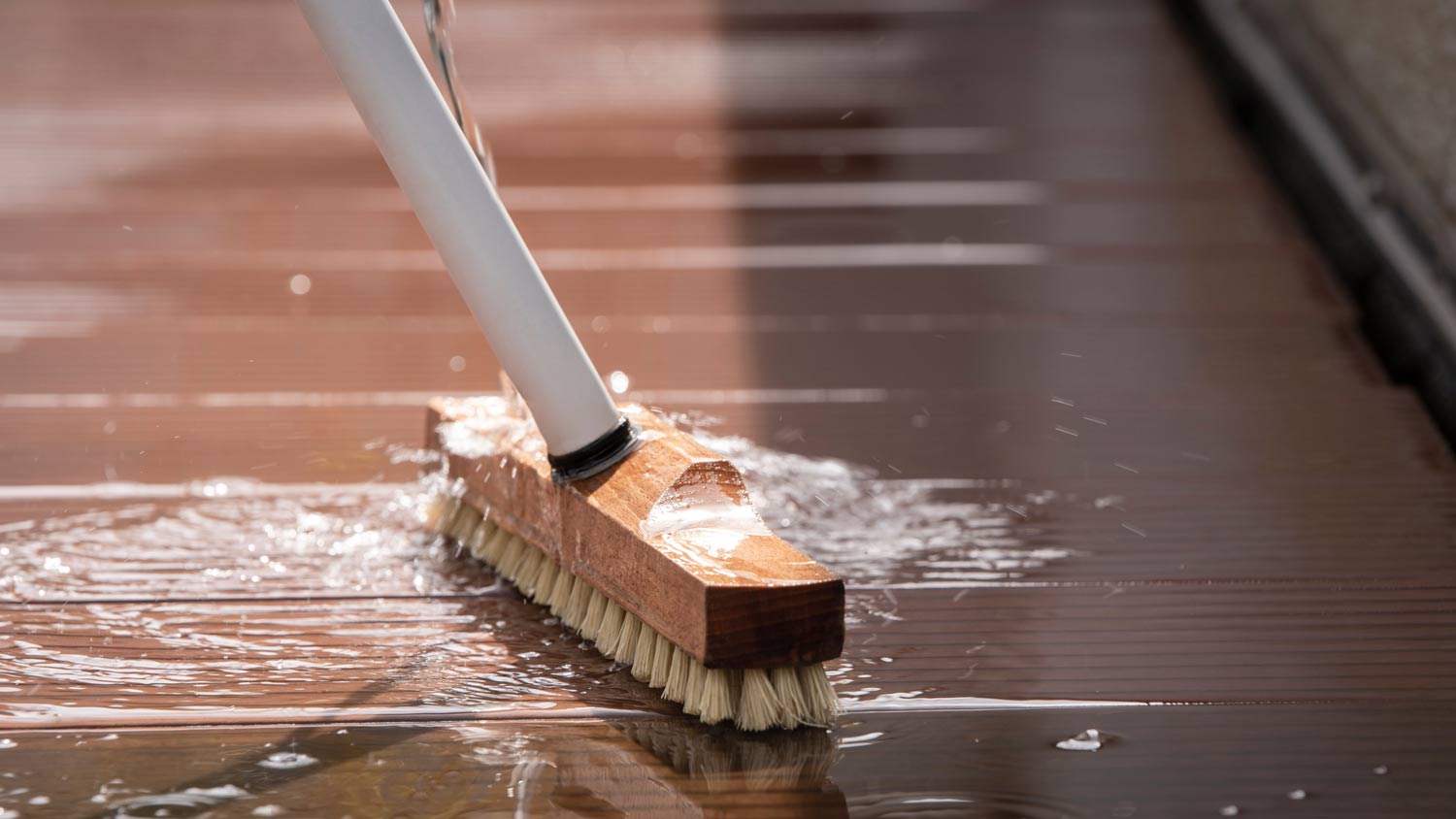
The cost of materials and labor all factor into your overall brick staining cost, but what other factors impact the bottom line? Our guide covers this and more.
Scrub scrupulously so the stain spreads smoothly


Staining your deck makes the space more inviting for those summer BBQs and increases its durability by protecting it against the elements and minimizing mold. But, without the proper prep work, the coating won’t adhere well, affecting its appearance and longevity. Before you get stuck in with the brushes and rollers, learn how to clean a deck before staining to keep it preserved and polished for years to come.
Taking the time to prep the deck properly means you’ll make the most out of the stain and won’t waste time and money having to restain prematurely. Before you get sucked into scrubbing, take the following steps:
Check the forecast: You want to clean immediately before staining. Avoid the task if there’s rain or high temperatures forecast. Weather should be dry but not so hot that it promotes uneven penetration. Late spring is often the best time to stain a deck, sprucing it up for summer.
Clear the space: Remove all deck furniture and container plants so you have a blank canvas to work with.
Carry out repairs before cleaning: Replacing damaged deck boards or other DIY deck repairs are best done before staining. Call in a local deck repair contractor for the bigger structural overhauls.
Remove previous seal or paint coating: If there’s a layer of sealant or paint on your deck, this needs to come off before you clean and apply any stain.
Follow these steps to clean a wooden deck to have a pristine surface ready for staining (or painting).
Sweep away leaf litter and other dirt before you bring out the cleaning agent. If you see pieces of debris wedged between the boards, use a putty knife to tease them out.

You need to apply some commercial deck cleaners to a dry surface and others to a wet surface. Always check the manufacturer's instructions for use and the length of time it should sit on the deck. You can apply some cleaners directly, and other concentrated formulas need mixing with water. Wear gloves and goggles to protect your eyes and skin.
Alternatively, make a homemade deck cleaner. A mixture of two gallons of warm water and 1/2 cup of distilled white vinegar should do the trick. If there’s a lot of mold and mildew on the deck, mix 1/4 cup of ammonia-free liquid dish soap and 2 cups of oxygen bleach with two gallons of warm water.
Spread the cleaner using a long-handled paint roller, use a pump sprayer, or scrub in with a stiff-bristled brush.

Rinse the cleaner off using a garden hose or low-power pressure washer, spraying in the direction of the wood grain. Overly high pressure can damage wooden surfaces, so stick with a 1,200 to 1,400 psi setting for soft and medium-density wood decks.
If there are any remaining areas of residue, sand your deck to remove them and then rinse again.
Do a last sweep to lift any lingering debris once the deck is fully dry and immediately before you apply the stain.
All the above steps apply for cleaning composite or hardwood (such as Ipe or Batu) decks before staining, but the rinsing technique differs slightly from standard softwood. Composite decks are tougher, so you can use a higher-power pressure washer to help lift any grimy residue or mold. Use a tool with pressure up to 3,100 psi, and hold the wand at least a foot away from the deck boards while using a 40-degree white nozzle tip.
Don't add baking soda to any homemade cleaner in a pressure washer. This granular cleaner can clog up the sprayer nozzle.

Cleaning a deck before staining isn’t rocket science, but there are some things you want to avoid to prevent doing damage or making the job more difficult. These include:
Chlorine bleach: This substance isn’t safe to mix with dish soap and can damage your deck. Only use oxygen bleach when cleaning decks.
High pressure on softwoods: Use a pressure washer on low psi settings up to 1,400 for soft- and mid-density woods, or stick with a stiff-bristled brush and garden hose.
Wire bristle brushes: These can damage the decking. Plastic bristles are tough enough to remove grime, but if you scrub in the direction of the grain, they won’t mark the surface.
Not drying out the deck properly: Before staining, ensure the deck isn’t still damp from washing. It should dry for at least 24 to 48 hours. Trapped moisture leads to poor stain adhesion and the potential for mold and mildew formation.
Hiring a pro to clean a deck costs $100 to $50. The price depends on how dirty the deck is and its overall size. Cleaning a small deck will cost around $100, while a large and extremely dirty deck can cost $400 or more. Most pros opt for pressure washing, otherwise called power washing. These powerful tools can make short work of even the dirtiest tools. As for labor, count on paying around $50 to $100 per hour. However, many large retailers rent out these machines to DIYers.
Deck cleaning is within your reach even if you aren’t a DIY guru. It doesn’t require lots of costly equipment or tricky techniques. With a few basic supplies and a bit of elbow grease, this is a job you can tackle in a couple of hours.
If you don’t want the hassle or are worried about picking the right cleaning products, hire a local deck cleaning service. If you hire a local deck staining contractor, they often include the cost of cleaning in their quote. Average deck staining costs are between $550 and $1,250.
From average costs to expert advice, get all the answers you need to get your job done.

The cost of materials and labor all factor into your overall brick staining cost, but what other factors impact the bottom line? Our guide covers this and more.

Painting a garage door is one of the most impactful projects you can undertake with a smaller budget. Learn what makes up the total cost, as well as tips on how you can save.

Painting your gutters can give your home the fresh finishing touch it needs to look its best. This guide walks you through the cost to paint gutters.

Ready to take on the home from the outside? Why not start with its exterior paint? These tips help you paint your home's exterior surfaces without making costly mistakes. Learn how to paint the exterior of your home at a professional level.

Discover the best time to paint a garage floor. Learn about weather, temperature, and other factors to ensure the best results.

How much do painters charge? This question can only be answered after determining the scope and size of your painting project.